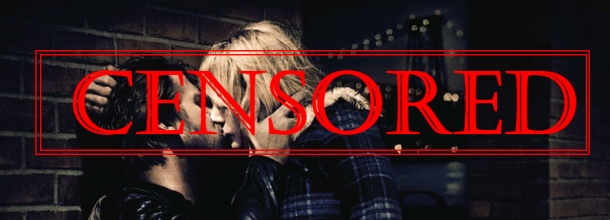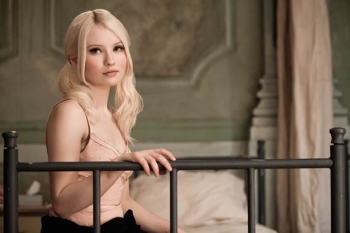Ban this sick filth: Certification through the ages

Classification has always been a thorny issue in film. Deciding what constitutes as acceptable and what doesn’t is a difficult thing to do but in most cases it’s highlighted the battle between art (okay, trashy films) and commerce. Here are a few moments in recent certification history that have caused a debate but before we start, let’s have a little look at how certification came to be what it is now…
In the 1930s Hollywood set up the Hays Code as a means of self-governance, preventing federal forces from assuming control over censorship. Guarding against the emergence of sex and violence (of a nature that seems woefully tame by modern standards), most producers/directors circumvented it by imbuing their scripts with witty innuendo and suggestive, but never explicit themes.
By the time the Hays Code ended in the late 60s, the US and other countries had embraced a more liberal and expressive viewpoint resulting in efforts like Rebel Without a Cause, Some Like it Hot and Guess Who’s Coming to Dinner. Films which explored violence, race and sex in a more frank and open way brought about the end of the Production Code, and as one system fell another emerged in the form of the MPAA Ratings System. Over the next fifteen years, the rating system was in flux due to various complaints and confusion over what the ratings implied. In a similar way the UK were changing their certification system getting rid of the X-rating before introducing the U, PG, 12, 15 and 18 system. Here are a few debates that have shaped the course of censorship.
Video Nasties
In the 80s the UK was experiencing a wave of films that appealed to the baser sensibilities of the public. Thanks to a lack of regulation over the emerging VHS format, films, especially horror, were amazingly gory and inventive flouting any kind of decency. Heads exploded and women were…assaulted…by trees.
Whether you these films caused a moral panic or were made a scapegoat for society’s ills, our own BBFC felt that the public should be shielded from it. This wasn’t a trend that started in the 80s, although these films weren’t part of the video nasties group. The Texas Chainsaw Massacre (1974) and The Last House on the Left (1972) were banned until 1999 and 2002 respectively and Stanley Kubrick’s A Clockwork Orange (famously banned by the director himself after he received death threats), did not emerge until after his death in 1999.
Indiana Jones and the Temple of the PG-13
Spielberg (not for the last time) listened to his buddy Lucas who, after the success of The Empire Strikes Back, felt sequels should explore the darker elements of their universes. Parents objected to an Indian voodoo priest called Molo Ram (awesome name) ripping people’s hearts out, villains being eaten by crocodiles (actually, they were alligators) and children being used as slave labour. I can’t imagine why.
This led to Spielberg whispering in MPAA president Jack Valenti’s ear to introduce a new rating that bridged the gap between PG and R. Thus PG-13 was born which brought more than its fair share of problems later on.
NC-17 and the kiss of death
Controversy follows the NC-17 rating everywhere it goes (although it doesn’t actually erm, move) but the restrictive nature of the rating and lack of commercial prospects has led many to believe it’s the kiss of death. Paul Verhoeven’s classic/rubbish Showgirls was rated NC-17 and promptly died at the box office (though that could be down to its awfulness).
Nonetheless the NC-17 rating brought up the debate over what the MPAA values as being fit for mainstream consumption. Films dealing with sex appear to be at a disadvantage compared to those that deal in violence. Although NC-17 doesn’t mean the film is banned, with very few cinema chains accepting films with NC-17 content, it may as well be. Films like Blue Valentine were given their marching orders for a sex scene seen by many has rather tame in comparison to a film like 300.
Relaxing of censorship
In the last decade or so films have steadily increased in the amount of violent and sexual situations they portray. Compare Terminator 2: Judgement Day with 300 and you’ll find the former rather tame in comparison to the latter. It has less nudity (they’re all wearing jock straps and capes for goodness sake!), less violence (that kid gets his head chopped off!) and less…weirdness (did anyone see that goat-headed minstrel?)
Some have argued that there has been a ratings creep, an acceptance of more controversial scenes that may not have made it pass the certification stage a decade earlier. Certainly, with the re-release of the original Texas Chainsaw Massacre and The Last House on the Left in the UK there has been a gradual acclimatisation to subjects that were initially perceived as being bad taste.
Imitable Violence
That being said, the relaxing of censorship in some areas has not lead to the BBFC has becoming lax across the board. The BBFC still takes affront to physical violence, more specifically, headbutts. For instance the BBFC has this line in their guidelines that reads “dangerous behaviour (for example, hanging, suicide and self-harming) should not dwell on detail which could be copied.” Headbutts fall under that section, any physical act that could be copied by members of the public is seen as (potentially) glamorising violence. Interestingly enough The Matrix was on the receiving end with a number of fights (Morpheus Vs Agent Smith, Neo vs Agent Smith) edited down by the distributors themselves to ensure the cut, also joining the “Glasgow kiss” club was, surprisingly, Spider-Man 2 in 2004.
The emergence of the 12A rating
It took the UK a couple of decades but in 2002 they implemented their own version of the PG-13 certificate in the form of the 12A. This meant that children under 12 could see a film (so long as they were accompanied by an adult), nonetheless this approach caused problems as some films made under the 12A rating are seen as not fit for children under 12.
The Dark Knight especially pushes the 12A certificate as far as it conceivably can, presenting a dark, intense and serious setting that’s a world away from the DayGlo aesthetics of the Schumacher films or cartoons.
Swearing
Only in America could you have film that’s given an R for a bit of light-hearted swearing. Putting The King’s Speech in the same ratings category as 300, Sin City and The Matrix Reloaded, seemed a little silly for a film about a monarch regaining his confidence to speak in public. Perhaps if King George IV started his speeches with the words “listen up bitches”, it may have deserved such a rating.
The Weinstein Company re-edited the film to the more family friendly PG-13, much to the chagrin of its director and lead actor. It didn’t particularly work with the film making less money with its edit than before. You may have a voice King George but the MPAA don’t want to hear it.
Sex
As with the NC-17 rating, films dealing with sex seem to irk people more than violence does, a recent example of this was Zack Snyder’s Sucker Punch. Although it’s not an obvious choice, the film was re-edited to garner a family friendly PG-13 certificate except that much of the film’s content wasn’t fit for consumption by that age group. To add insult to injury, in order to attain that certificate Snyder had to re-edit the film which may have led to its rather confusing narrative.

So where does this leave censorship? It seems more than ever that certification bodies will struggle in grappling with the content in some films and studios will reluctantly make whatever changes they need to. Studios and film-makers will push each rating to its limit but creatively finding a way past them, like films in 30s, seems less and less likely. Films will be chopped and changed so that they appeal to as wide an audience as possible, ensuring they make as much money on their investment. If anything certification is leading to an era where films are being compromised, not to make an artistic statement but for commercial reasons. What do you think?








Recent Comments